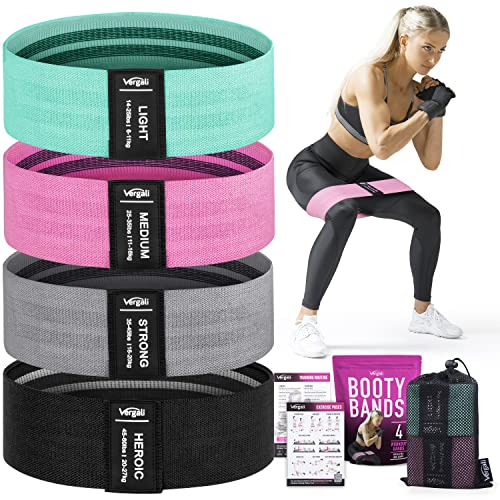Pilates, a fitness workout system, is both durable and functional. It lets you build muscle strength, flexibility, and core stability. Reformer classes, although efficient, might not always be the most suitable or the easiest option. Nonetheless, the same advantages at home can be reached thanks to the efficacy of a resistance band. This versatile and light piece of equipment allows you to do a challenging whole-body Pilates session without having to deal with large or expensive equipment.
Why should I choose Resistance bands for Pilates?
Resistance bands can be considered as one of the greatest creations for home workouts. They are able to replicate the resistance of springs used in a reformer machine, thereby making your Pilates training more comprehensive and effective. Moreover, they allow:
- Enhance muscle activation: The continuous force put on the muscle makes it work the entire length of the motion.
- Improve flexibility and mobility: By providing additional resistance, you can push your joints far beyond the normal range they are able to reach.
- Boost strength and endurance: The bands impose control and balance challenges enabling you to train more intensively.
- Save space and money: The bands are less expensive than the reformer machine and are easy to store or carry along.
5 Exercises of Resistance Band Pilates for a Stronger Body
Please, practice the following five Pilates exercises with a resistance band in order to strengthen your core, define your muscles, and improve your flexibility. For the best results, do 12–15 reps of each exercise and then repeat the whole circuit two more times.
1. Leg Lifts with Resistance Band
Targets: Glutes, hips, and core stability
- Loop the band around your ankles and lie on your side.
- To begin, align both of your legs parallel to each other with the help of the knees.
- As a first step, move the working leg slower than when you are still.
- Push your midsection in a manner where you feel the least amount of movement while the upper body is challenged.
Tip: The exercise promotes glute strengthening and also pelvic stability, which is one of the essential factors in Pilates.
2. Hip Lift to Leg Extension
Targets: Core, glutes, and shoulders
- Begin by lying on your back and placing the band between both of your feet.
- First, the leg is bent as you lift and the hips are raised into the bridge whose arms resemble a tabletop.
- Continuously hold the bridge, and move the leg flexibly forward and backward effortlessly.
- Cycle through the process of lifting and lowering legs, again with the hips raised.
Tip: This exercise is helpful in that it increases the strength in the lower body and also activates the obliques.
3. Frog Press
Targets: Inner thighs, glutes, and core
- Begin with your back on a mat, and tie the loop around the bottom of the arches of your feet.
- Start by drawing your knees even closer to your boobies and stand your feet on the mat, then bring them together in a table-top position. And they cannot jump away from each other or slide down from the floor.
- Press your legs out against the band, then, bring the legs back slowly and in.
- Keep the pace consistent to decrease the likelihood of the intensity waning.
Tip: Knee adductor or inner thigh muscle hypertrophy and hip mobility are two things that can be achieved with this move.
4. Kneeling Side Bends
Targets: Obliques and core stability
- Secure the band onto one knee and kneel on your mat.
- Get the other end of the band and put it in the hand of the same side.
- Raise the hand up and bend to the right in a slow motion.
- Come back to the first position and pull again. Work with the other side too.
Tip: This exercise engages oblique muscles which results in well-defined core and a longer body shape.
5. Bent-Over Lateral Pull
Targets: Shoulders, upper back, and core
- Stand with your feet shoulder-width apart.
- Grab the band with both hands and get it in front.
- Lean over slightly but keep the back straight when you do it.
- Stretching the band to the sides, your shoulder blades will meet.
- Start pulling apart slowly and then go through it again.
Tip: This exercise helps your shoulders to be stable and your posture to be right, which are both of the advantages of a well-carried-out Pilates exercise.
Benefits of Pilates with Resistance Bands
Using a resistance band in your Pilates practice will not only up the game but also amplify the beneficial effects of the movements. The following are its main advantages:
- Budget-Friendly: Bands are a good substitute for pilates machines as they offer the same benefits without draining your bank account.
- Refined Muscles: Resistance allows for a more advantageous muscle contraction by forcing your muscles to slow down and focus.
- Functionally Stronger: Onetime exercise of muscles through eccentric moves along with higher flexibility are the overall outputs of such practices.
- Injury Prevention: Successful exercise with the assistance of these bands will help to restore your muscle balance, which ultimately will shrink the chance of an injury.
Instead of investing in a Pilates reformer machine that takes much space in your room, purchase a resistance band, and integrate Pilates resistance band exercises into your home routine. Your core shape would improve, you’d become more flexible, and get the lean look of muscles. Also, the bands are very light and easy to carry around making the process of practicing Pilates constantly possible, whether inside or outside of your house.
Pilates can be achieved on a budget when you get a resistance band to practice these exercises with, and it can still give you many benefits without having to spend too much money. with the following workout strength—losing kilos and inches, as well as reversing the process.


















